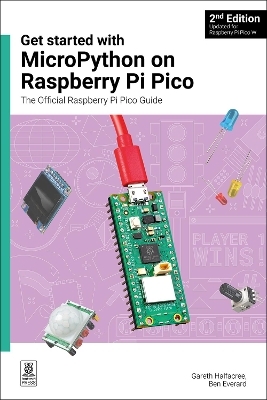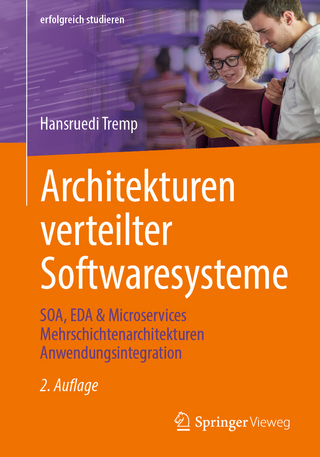
Get started with MicroPython on Raspberry Pi Pico
The Official Raspberry Pi Pico Guide
Seiten
2024
|
2nd New edition
Raspberry Pi Press (Verlag)
978-1-912047-29-1 (ISBN)
Raspberry Pi Press (Verlag)
978-1-912047-29-1 (ISBN)
Microcontrollers, like Raspberry Pi Pico, are computers stripped down to their bare essentials (no keyboard, mouse, or monitor). Learn how to set up your desktop or laptop computer to write Python code for the Pico and Pico W, and how to make your own electro-mechanical projects that can interact with the real world.
Microcontrollers, like the RP2040 chip at the heart of Raspberry Pi Pico, are computers stripped back to their bare essentials. You don't use monitors or keyboards with them - instead, you program them over USB to take their input from (and send their output to) on-board input/output pins.
Using these programmable connections, you can light LEDs, make noises, send text to screens, and much more. In Get started with MicroPython on Raspberry Pi Pico 2nd Edition, you will learn how to use the beginner-friendly MicroPython language to write programs, and you'll connect up hardware to make your Raspberry Pi Pico interact with the world around it. Using these skills, you can create your own electromechanical projects, whether for fun or to make your life easier.
Fully updated for Raspberry Pi Pico W and the latest version of MicroPython, this book shows you how to:
Get started with Raspberry Pi Pico and Pico W
Work with various electronic components
Create your own programmable electronic contraptions
Turn Raspberry Pi Pico W into a network-connected node for the Internet of Things
Link your Pico W to your smartphone, tablet, or another Pico W with Bluetooth Low Energy (BLE)
Whether you're using Raspberry Pi Pico for a home project, industrial automation, or learning (or teaching!) electronics and programming, this book will show you how.
Microcontrollers, like the RP2040 chip at the heart of Raspberry Pi Pico, are computers stripped back to their bare essentials. You don't use monitors or keyboards with them - instead, you program them over USB to take their input from (and send their output to) on-board input/output pins.
Using these programmable connections, you can light LEDs, make noises, send text to screens, and much more. In Get started with MicroPython on Raspberry Pi Pico 2nd Edition, you will learn how to use the beginner-friendly MicroPython language to write programs, and you'll connect up hardware to make your Raspberry Pi Pico interact with the world around it. Using these skills, you can create your own electromechanical projects, whether for fun or to make your life easier.
Fully updated for Raspberry Pi Pico W and the latest version of MicroPython, this book shows you how to:
Get started with Raspberry Pi Pico and Pico W
Work with various electronic components
Create your own programmable electronic contraptions
Turn Raspberry Pi Pico W into a network-connected node for the Internet of Things
Link your Pico W to your smartphone, tablet, or another Pico W with Bluetooth Low Energy (BLE)
Whether you're using Raspberry Pi Pico for a home project, industrial automation, or learning (or teaching!) electronics and programming, this book will show you how.
| Erscheinungsdatum | 22.08.2024 |
|---|---|
| Verlagsort | Cambridge |
| Sprache | englisch |
| Maße | 156 x 234 mm |
| Themenwelt | Informatik ► Weitere Themen ► Hardware |
| Technik ► Elektrotechnik / Energietechnik | |
| ISBN-10 | 1-912047-29-2 / 1912047292 |
| ISBN-13 | 978-1-912047-29-1 / 9781912047291 |
| Zustand | Neuware |
| Informationen gemäß Produktsicherheitsverordnung (GPSR) | |
| Haben Sie eine Frage zum Produkt? |
Mehr entdecken
aus dem Bereich
aus dem Bereich
SOA, EDA & Microservices Mehrschichtenarchitekturen …
Buch | Softcover (2024)
Springer Vieweg (Verlag)
CHF 55,95
entwickle, drucke und baue deine DIY-Objekte
Buch | Hardcover (2023)
Hanser, Carl (Verlag)
CHF 48,95


